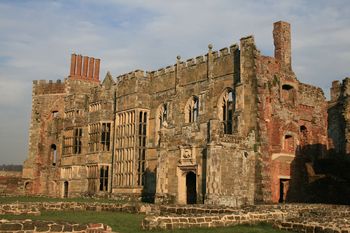Scheduled monument
Jump to navigation
Jump to search



(CC [1]) Photo: Ivanka Majic
The remains of Cowdray House in England are protected as a scheduled monument.
The remains of Cowdray House in England are protected as a scheduled monument.
Under British law a scheduled monument is an archaeological site protected from unauthorised change. The schedule of monuments is a list of protected archaeological sites in England, Scotland, and Wales.[1] The Ancient Monuments and Archaeological Areas Act 1979 ensured legal protection for scheduled monuments, however sites in Northern Ireland are not included.[2] Nearly 20,000 sites are scheduled; however, this is a small proportion of all the archaeological sites in England, Scotland, and Wales as in England alone there are around a million sites or find spots. Only sites which are considered nationally important are scheduled.[3]
References
- ↑ Scheduled monuments", English Heritage, accessed 21 February 2013.
- ↑ "Ancient Monuments and Archaeological Areas Act 1979", legislation.gov.uk, accessed 21 February 2013.
- ↑ "What can be scheduled?", English Heritage, accessed 21 February 2013.